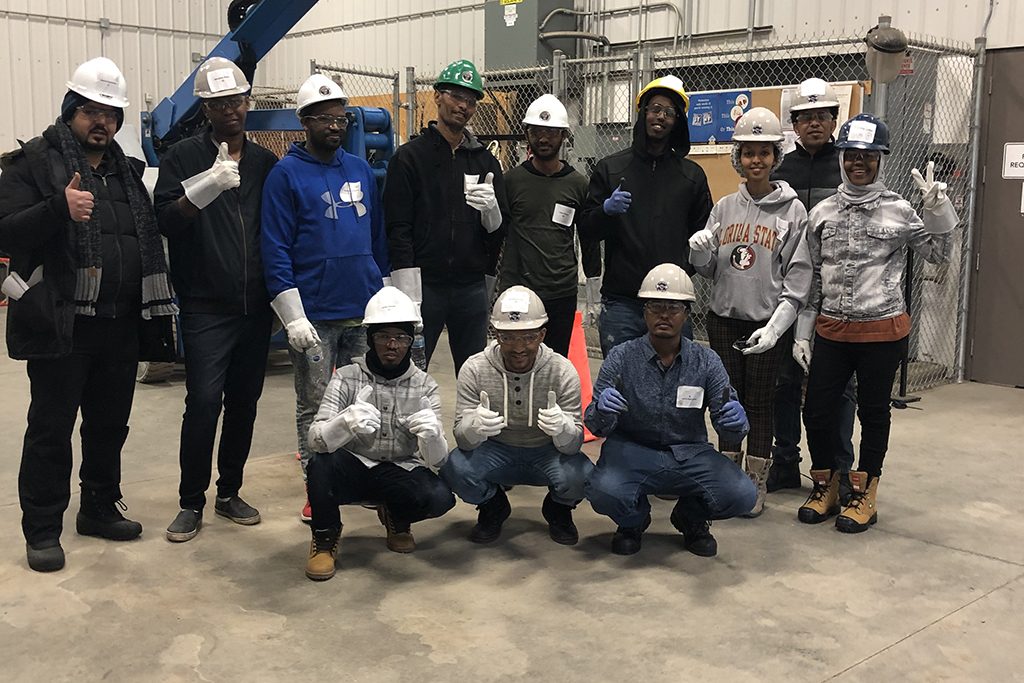A new program being tested in Alberta aims to find better ways of transitioning new Canadians into trades careers by focusing on language and cultural training.
The Newcomer Trades Training project is a federally funded program designed to test the effectiveness of language training on-the-job and in a contextualized format, rather than in language-class format, for newcomers to Canada, who have an aptitude or interest in working in trades in Canada.
Alberta Workforce Essentials Skills (AWES) is working with the Christian Labour Association (CLAC) and Action For Health Communities (A4HC) to recruit and train immigrants to succeed in insulation and scaffolding careers. The first step is careful recruitment.
“We try to do a very thorough recruitment to have the best chance of success. Many of them have only been in Canada for six months and this is a big commitment,” said Cindy Messaros, AWES executive director. “Thirty-eight people were referred to the project. We did assessments that included hands-on skills and we selected 15 participants.”
Messaros said many people coming to Canada from other countries already have skills and expertise in trades or other jobs, but language can be a barrier to getting a job and beginning a career.
“If they are sitting in a language classroom the integration takes much longer and getting to work is more difficult,” said Messaros.
The training project includes three months of trades orientation training, fourth months of work placement and five months of targeted trades training. CLAC will help connect the students to employers for work placement, and when the training is finished, participants can work for any employer.
Messaros explained that the training is highly targeted to a specific job. The team analyzes the curriculum for apprenticeship exams and tailors their language training to that rather than trying to improve overall language skills. This involves hands-on training, visual training, games, skill-building activities and job-related numeracy.
“We also do things to help them understand Canadian workplace culture, so they are prepared for the first day on the job. It’s a whole methodology related to skills complexity,” said Messaros. “The ultimate goal for students in our project is to get onto an apprenticeship track and do it faster than normally would be possible.”
Andrea Streisel, employment program lead for A4HC, explained that while many employers are open to hiring new Canadians, the program attempts to address the barriers that often prevent them from being successful.
“I’ve seen employers who are open but because they haven’t done this before and newcomers aren’t properly prepared and the employer can’t support them to be successful,” said Streisel. “There end up being safety violations or a poor cultural fit, jobs are lost and it’s a bad experience for both. We need to come up with better solutions to bridge that gap. It’s not as simple as being open-minded. People think being open-minded solves it, but once they bring them on site the complexity of integration is much more difficult. We are trying to do that in a really targeted way.”
She explained that one example of this is a trip to the store the group will be doing where they can learn what personal protective equipment is expected on a job site and how it is worn. She said this builds confidence and reduces anxiety.
Another major component is to not just get new Canadians jobs, but long-term careers.
“What happens to most new Canadians is if they get into construction, they get into a labour track and can’t get out of it and they are limited by the training they can access,” said Streisel. “It often takes years to get there. They don’t want to leave work to attend school. We want to bridge that gap with targeted language training for apprenticeship.”
Streisel, who used to work as an electrician, knows firsthand what is like struggling to get ahead in a career without any support.
“As a woman I wasn’t treated poorly, but I was sent to work with the newcomers. They paired us up and gave us jobs where we weren’t getting the training we wanted,” she said. “I had to advocate for myself, but I was with newcomers who didn’t have the ability to do that. We need to build something to help them move outside of being a labourer.”
The program is part of a larger federally funded effort called the Newcomer Trades Training Program that is also seeing similar training for parts technicians in Saskatchewan and other apprentices in New Brunswick. In Alberta the program will run from March 2020 to March 2021.











Recent Comments
comments for this post are closed